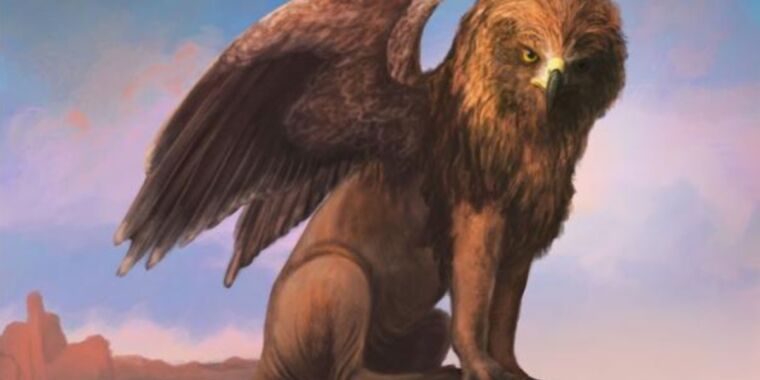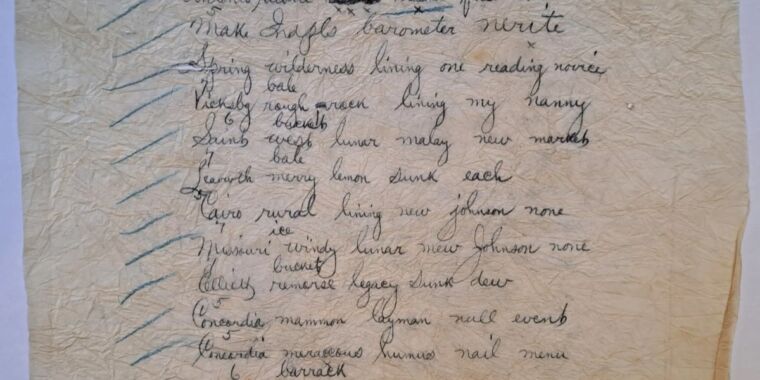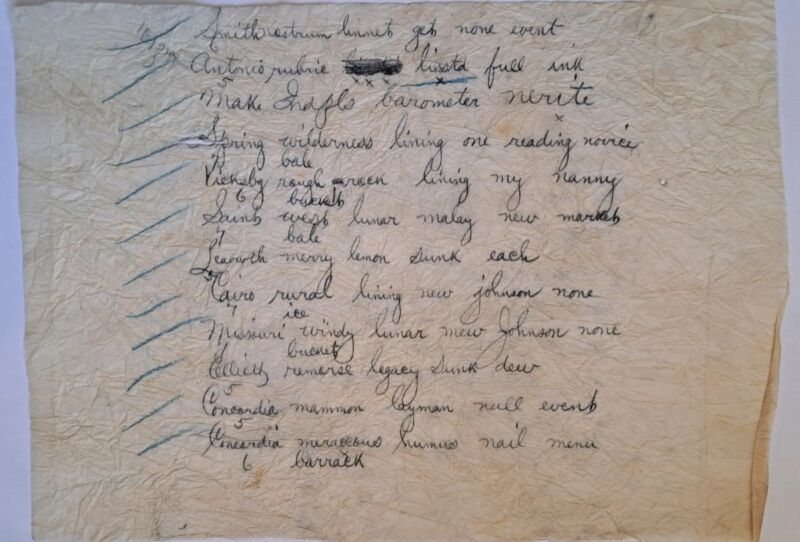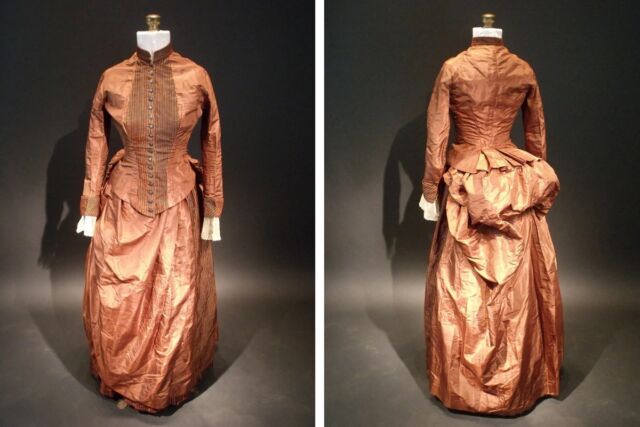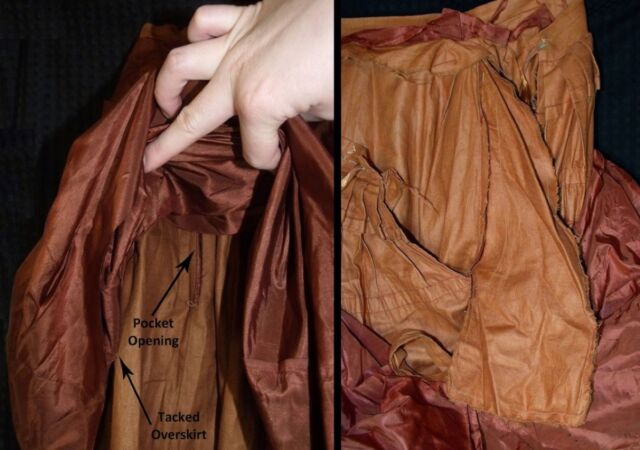The mythical gryphon was not inspired by a horned dinosaur, study concludes
Fantastic beasts and where not to find them —
The mythological creatures are instead “chimeras of big cats and raptorial birds.”

Enlarge / Painting of a gryphon, or griffin, a lion-raptor chimera from ancient folklore.
Mark Witton
The gryphon, or griffin, is a legendary creature dating back to classical antiquity, sporting the body, legs, and tail of a lion and the wings, head, and front talons of an eagle. Since the 1980s, a popular “geomyth” has spread that the griffin’s unique appearance was inspired by the fossilized skeleton of a horned dinosaur known as Protoceratops. It’s a fascinating and colorful story, but according to the authors of a new paper published in the journal Interdisciplinary Science Reviews, there is no hard evidence to support such a connection.
“Everything about griffin origins is consistent with their traditional interpretation as imaginary beasts, just as their appearance is entirely explained by them being [mythological] chimeras of big cats and raptorial birds,” said co-author Mark Witton, a paleontologist at the University of Portsmouth. “Invoking a role for dinosaurs in griffin lore, especially species from distant lands like Protoceratops, not only introduces unnecessary complexity and inconsistencies to their origins, but also relies on interpretations and proposals that don’t withstand scrutiny.”
There are representations of griffin-like creatures in ancient Egyptian art dated to before 3000 BCE, while in ancient Greek and Roman texts the creatures were associated with gold deposits in Central Asia. By the Middle Ages, griffins were common figures in medieval iconography and in heraldry. The hippogriff named Buckbeak in Harry Potter and the Prisoner of Azkaban is a related mythical creature, the product of a griffin and a mare.
It was the legendary link to Central Asian gold deposits that intrigued classical folklorist Adrienne Mayor in the 1980s. Drawing on Greek and Latin texts and related artworks, she suggested (beginning with a 1989 paper in Cryptozoology) that nomadic prospectors stumbled across fossilized skeletons of Protoceratops and brought tales of strange beaked quadrupeds to other regions as they traveled southeast along ancient trade routes. The dinosaur’s bony neck frill might have been interpreted in early illustrations as mammal-like external ears, with its beak indicating a creature that was part-bird, leading to the eventual addition of wings.
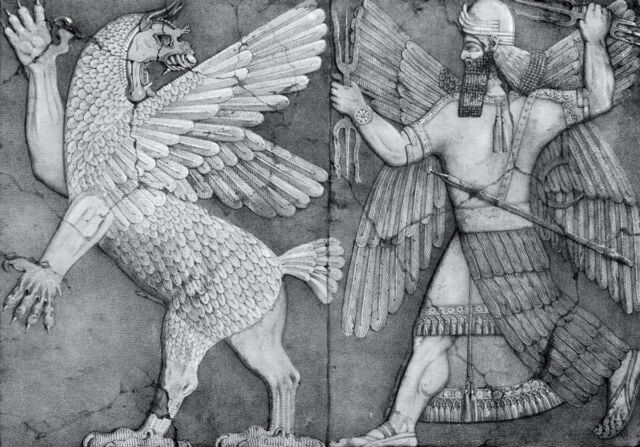
Enlarge / This 9th century BCE relief depicts a griffin-like monster being pursued by a deity.
L. Gruner/Layard (1853)
Over the last 30 years, Mayor’s hypothesis has gained traction in the popular media and within certain academic circles; it’s now one of the most famous and widely touted examples of geomythology. It’s not an entirely crazy idea, even if its origins lie in the pseudoscientific field of cryptozoology. After all, people as far back as Paleolithic times certainly used fossils as decorative ornaments or talismans, and there are bona fide cases of such “geomyths”: For example, British ammonites were modified into “snake stones”; shark teeth were interpreted as snake tongues; and “winged” brachiopods became “stone swallows” in historic China.
The case for skepticism
But Witton and fellow Portsmouth paleontologist Richard Hing were skeptical because of the lack of any material evidence to support the connection between the griffin and Protoceratops. And they weren’t alone. Paleontologist Paul Sereno once dismissed Mayor’s claims as “sophomoric” and questioned her understanding of how fossils are found, identified, and interpreted, per the authors. So they set out to conduct the first detailed assessment of Mayor’s claims, re-examining historical fossil records—including the distribution of sites where Protoceratops fossils have been found—and classical sources, as well as consulting with historians and archaeologists about the supposed link.
“It is important to distinguish between fossil folklore with a factual basis—that is, connections between fossils and myth evidenced by archaeological discoveries or compelling references in literature and artwork—and speculated connections based on intuition,” said Hing. “There is nothing inherently wrong with the idea that ancient peoples found dinosaur bones and incorporated them into their mythology, but we need to root such proposals in realities of history, geography, and palaeontology. Otherwise, they are just speculation.”
The mythical gryphon was not inspired by a horned dinosaur, study concludes Read More »
